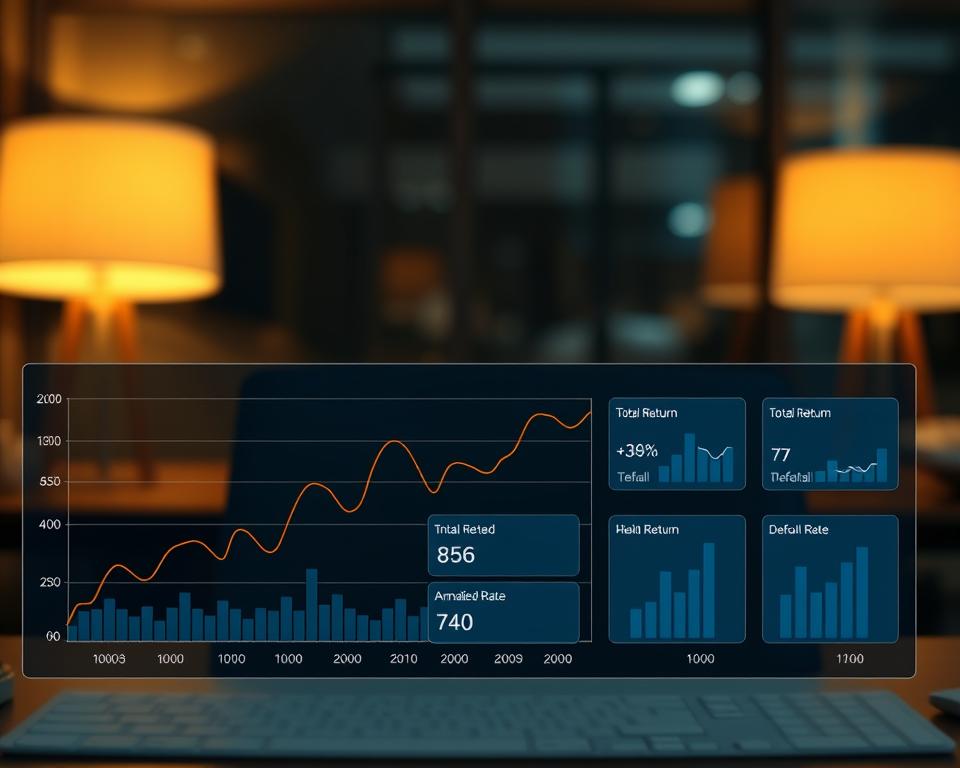Understanding CLO Equity Explained – A Manual
Worldwide domain of collateralized debt obligations surpassed the $1 trillion milestone in 2021. This notable growth indicates the rising significance of CLOs in the financial world. This guide aims to provide readers with a thorough grasp of the equity aspect of CLOs and the singular opportunities for investment it affords. Equity in CLOs is fundamental for investors looking to diversify and enhance their investment returns.
We will explore the essence of CLO equity, how collateralized loan obligations are constructed, and the factors that influence these investments. Market participants exploring this CLO market niche arena will discover both benefits and potential hazards. They will also acquire knowledge of the key performance traits crucial for their investment tactics.
Key Observations
- Worldwide, the CLO market has exceeded the $1 trillion mark, highlighting the promise of CLO equity opportunities.
- CLO equity is vital for portfolio diversification and maximizing returns.
- The structure of collateralized loan obligations is key to understanding their performance.
- Investors must assess various factors influencing CLO equity returns.
- Our manual delineates both the hazards and benefits linked with investing in CLO equity.
An Introduction to CLO Equity
CLOs represent a significant transformation in the landscape of corporate finance. These assets showcase a mix of debt and equity, making them complex. Typically, the equity portion—roughly 10%—attracts interest due to its potential for high returns. Understanding the part CLO equity plays in the broader market is critical for investors of all sizes.
Such investments serve as a gateway to leveraged loans, combining risk with the possibility of substantial gains. Gaining expertise in this area often requires targeted education in CLO structures. As these funds adapt, they reveal structures fit for different investor profiles and strategies.
Defining CLO Equity
Fundamentally, CLO equity signifies the last layer of income from CLO cash flows.
Funds for CLO equity are allocated only once all senior obligations are settled. This investment is for those ready to embrace its risks for potentially high returns.
Core Definition and Main Characteristics
Fundamentally, CLO equity entails acquiring rights to the cash flows from loans, resulting in an unconventional investment option. It draws investor interest through the prospect of exceeding standard equity returns via leverage. Key features include:
- The opportunity to receive leftover cash flows, denoting elevated risk coupled with higher reward possibilities.
- Being last in the payment order, it necessitates sharp credit evaluation skills.
- Potential for boosted returns, dependent on the success of the leveraged loans held in the CLO.
History and Growth of the CLO Market
Over a 30-year period, CLO equity has undergone significant expansion. It transitioned from a minor sector to a massive $1.1 trillion field. Key milestones include:
- The early ’90s saw its launch and subsequent adoption by large institutional entities.
- Increasing demand for leveraged loans propelled the evolution of CLO equity.
- Adjustments to shifts in regulation have rendered the market more resilient and attractive.
The evolution illustrates consistent development and an attainment of market maturity. Over years, aligning the interests of equity and debt holders has reinforced its structure, promising continued investment opportunities.
Understanding the Framework and Constituents of CLOs
Grasping the essence of collateralized loan obligations (CLOs) hinges on dissecting their structure and key elements. These entities operate as special purpose vehicles (SPVs), bundling various leveraged loans. The complexity of their design critically influences investor engagement with these instruments.
Understanding Collateralized Loan Obligations
A CLO’s structure is layered, guiding the cash flow and defining the investor’s risk. The structure involves tranches, splitting into debt and equity portions. The sequential arrangement of these tranches dictates payout priority. The role of a CLO manager is to manage these assets while balancing risks against expected returns.

The Divide Between Debt and Equity in CLO Structures
The split between debt and equity tranches within CLOs marks a crucial aspect of their investment profile. The debt component is attractive for its capacity to offer predictable yields. Conversely, equity tranches absorb initial losses, implying elevated risk yet the potential for superior returns. This contrast highlights the investment choices to be made when distributing capital within a CLO framework.
| CLO Tranche Type | Risk Category | Return Outlook | Reliability of Income |
|---|---|---|---|
| CLO Debt | Minimal to Modest | Reduced | Stable |
| CLO Equity Tranche | High | Enhanced | Variable |
Advantages of CLO Equity Investments
CLO equity offers a unique investment opportunity with high returns and steady cash flow potential. Selecting CLO equity allows one to exploit the margin between earned interest and borrowing costs. Its demonstrated resilience makes the CLO market a robust option for achieving dependable returns.
Potential for High Returns
Investors are drawn to CLO equity for its chance to deliver substantial, frequently double-digit, yields. It capitalizes on prevailing market trends and the performance of underlying loans, past performance indicates that CLO equity often outperforms conventional investments, thus rendering it a prized component in diversified portfolios.
Consistent Income and Payouts
CLO equity is known for generating consistent cash flows. Regular quarterly distributions support strategies centered on income generation. Such regularity supplies a dependable income, crucial during market fluctuations. Understanding the mechanics of these payouts helps in selecting suitable CLO funds or even CLO mutual funds.
| Investment Type | Mean Return | Distribution Frequency |
|---|---|---|
| CLO Equity Investment | Ten to fifteen percent | Once per Quarter |
| CLO Fund | 7-10% | Every Month |
| Traditional Bonds | Four to six percent | Twice a Year |
In comparison to other options, CLO equity and associated funds excel due to their high return prospects and steady income streams. These merits should be measured against personal financial aims prior to investment choices.
Performance Trends of CLO Equity
Over time, CLO equity has proven itself as an attractive investment with enduring strength in the financial arena. Investors evaluate CLO market performance to compare it with other investments. Analyses reveal that CLOs regularly exceed the returns of traditional asset classes. This is due to their structured nature and risk-adjusted returns.
Recent trends indicate that CLO equity remains stable through various economic cycles. Low incidence of defaults coupled with robust recovery rates underpin this stability. An examination of defaults reveals minor fluctuations, but overall rates are lower than other credit products. Such reliability is fundamental when evaluating the inherent risks of CLO investments.
By scrutinizing CLO fund metrics, investors can pinpoint the best entry points for investment. Managers utilizing proactive credit and market-based strategies work to augment returns. Unique features of CLO equity foster effective risk control. This makes CLOs a valuable addition to portfolios across different market situations.
| Fiscal Year | CLO Default Rate (%) | CLO Recovery Rate (%) |
|---|---|---|
| 2018 | 1.7 | 80 |
| 2019 | 1.5 | 82 percent |
| Year 2020 | 2.9 | 75% |
| 2021 | 1.2 | 85% |
| Year 2022 | 1.8% | 78% |
In summary, CLO equity stands out as a key investment option, thanks to its strong performance metrics. The consistent market metrics suggest an ongoing upward trajectory, rendering it a superb option for those aiming to diversify and secure elevated yields.
Key Drivers of CLO Equity Returns
CLO equity outcomes are predominantly affected by broader market trends and economic variables. Grasping these determinants is vital for appreciating the nuances of CLO investments. Variations in interest rates, along with economic steadiness, deeply affect investor confidence. Thus, these factors ultimately modify the return expectations for CLO investments.
Macro-economic Influences on CLO Equity
The general economic environment is a key determinant in shaping CLO equity returns. A strong economy usually results in lower default rates among underlying loans, which boosts CLO investment returns. In contrast, during weak economic periods, higher default rates may diminish CLO returns. Examples from history reveal that investor outlook shifts in response to economic markers. Interest rates, employment figures, and consumer spending are among these indicators.
How Active Strategies Enhance Returns
Effective asset management is crucial for navigating the intricacies of the CLO sector. Active management enables fund managers to adjust to new market conditions. They make strategic decisions that could enhance returns. Experts adept at navigating market fluctuations are essential for strengthening CLO outcomes. Ongoing evaluation of asset credit quality helps reduce vulnerability to loan defaults. This strategy improves the investment potential of CLO funds.
CLO Equity: A Risk Overview
Grasping the potential for loan defaults is essential when investing in CLO equity. Investors must familiarize themselves with historical default patterns and their consequent impact. Acquiring this understanding is critical for successfully handling the risks inherent in CLO equity. A well-informed strategy is the key to enduring investment success.
Decoding Default Probabilities
The foremost issue in CLO equity investments is managing the risk of defaults. Understanding default risks involves scrutinizing individual credit profiles alongside macroeconomic trends. Historical default patterns, affected by the economy, are crucial determinants of investor performance. Understanding these cycles helps investors tailor their portfolios effectively.
Mitigation Strategies for Investors
To safeguard against defaults, investors can employ several effective risk mitigation strategies.:
- Risk Distribution: Diversifying across multiple CLO investments helps lower exposure to individual loan failures.
- Selecting Skilled Managers: Opting for managers with a strong performance history can lead to better stability and investment results.
- Frequent Assessments: Continual portfolio evaluation enables timely responses to evolving market conditions.
By implementing these strategies, investors not only manage risks better but also enhance their chances of securing improved returns.
Approaches to Investing in CLO Equity
Dedicating capital to CLO equity requires a meticulous approach, particularly in selecting appropriate funds. A detailed examination of fund profiles and strategic plans is crucial. Appreciating the value of competent CLO management increases the chance for favorable returns and risk control.
Fund Selection for CLO Equity
It is imperative to select CLO funds that align with individual investment objectives. Major criteria involve:
- Fund performance history
- Nature of the portfolio assets
- Cost structures and fees
- Investment methodology
Knowledge of these criteria enables sound investment decisions. The hallmark of successful CLO investments lies in robust management and clear reporting practices.
Balancing Diversification with Expert Management
Diversifying investments across various CLO funds is key to mitigating risk and enhancing yields. Diverse investment across multiple CLO vintages minimizes exposure to a single fund’s volatility. Selecting adept fund managers is crucial in achieving superior outcomes. Experienced CLO fund managers are key to navigating market complexities effectively.
A diversified CLO portfolio includes a range of funds and management teams. This broadens diversification, securing a more stable investment environment.
Dynamic Management Strategies for CLOs
Active management in CLOs plays an essential role in maximizing returns from CLO equity. Expert managers skillfully maneuver through shifting market environments. They apply their knowledge to identify mispriced assets. These active techniques can markedly increase excess returns and improve overall performance.
By employing exhaustive market analysis and thorough credit evaluations, CLO managers make well-informed decisions. Monitoring both loan metrics and market dynamics is an integral part of their process. The ability to adjust portfolios in real time is essential because it allows them to seize opportunities presented by market fluctuations.
In periods of economic decline, adept active management has often led to notable profit. Forward-thinking managers recognize undervalued assets ready for recovery. This enables CLO equity investors to capitalize on market rebounds. This approach highlights the benefit of nimble management in elevating investment performance.
Comparing CLOs with Other Asset Classes
Understanding the nuances among various investment vehicles is crucial for effective asset allocation. This section compares CLOs to conventional bonds and private equity. Key points include differences in risk profiles, yield potentials, and liquidity. Our objective is to arm investors with the information necessary for prudent selection.
Contrasting CLOs with Bonds
Comparing CLOs to traditional bonds, clear differences emerge that affect investor choices. Traditional bonds usually provide fixed interest payments and come with set expiration dates. Conversely, CLOs offer returns that vary with market interest rates, an advantage in periods of rate increases. It serves as a hedge against inflation and the effects of escalating borrowing costs.
Additionally, the risk-return dynamics differ markedly between CLOs and bonds. Traditional bonds often yield less, especially when interest rates are low. CLOs, however, can lure investors with the possibility of higher returns, thanks to their structured nature. These considerations are vital for selecting the investment that best meets one’s financial targets.
| Characteristic | Standard Bonds | Collateralized Loan Obligations |
|---|---|---|
| Income Model | Fixed coupon payments | Market-sensitive returns |
| Ease of Trading | Issuer-specific | More liquid in secondary markets |
| Risk Characteristics | Modest risk levels | Substantial risk paired with enhanced return prospects |
| Response to Interest Rates | Inverse relationship | Benefits from increasing rates |
Contrasting CLOs with Private Equity
Comparing these with private equity reveals even more intricate differences. Typically, private equity involves less liquidity and extended investment horizons. In contrast, CLO equity is more liquid and offers consistent payout intervals. This ease of access makes CLOs more attractive for those wanting sooner entry to their investments compared to traditional private equity setups.
Risk profiles differ markedly between these avenues. Private equity carries elevated operational risk and dependency on individual business success. CLOs, in contrast, spread credit risk across numerous loans, not just one entity. Comprehending these differences is crucial for investors aiming to tailor their portfolios to their risk appetite and strategic goals.
The Future Landscape of the CLO Market
The trajectory of the CLO market is molded by changes in economic conditions and new regulations. Investors are closely monitoring these changes, as they affect CLO equity attractiveness. Institutional investors have increasingly flocked to CLOs in pursuit of higher yields amidst low interest rates. As a result, innovations in CLO design have emerged to cater to diverse investor profiles.
Technological advancements are crucial as well. Improved technological tools and automation in investing aid in advanced risk mitigation. These technological strides are set to revolutionize market dynamics, expanding investor access to CLOs. Optimism for CLO equity remains high, bolstered by increasing confidence in its long-term viability.
Projections suggest that sectors like technology and healthcare will offer fresh collateral bases. Such diversification would strengthen CLOs’ economic downturn resilience, increasing their attractiveness. Innovative market trends promise to deliver fresh strategies for engaging with CLO equity.
Final Thoughts
For those prepared to face its challenges, investing in CLO equity provides an enticing prospect. The overview has highlighted vital features like its distinctive design and potential for significant gains. As the CLO sector progresses, grasping its changes is vital for investors looking to fine-tune their investment mixes.
It’s also critical to understand the risks linked with this type of investment. Highlighting the importance of detailed analysis and proactive management is crucial in lessening these risks. A sound, informed approach enables investors to navigate obstacles and maximize returns in CLO equity.
CLO equity stands as a noteworthy choice for those seeking to diversify their portfolios. It calls for an educated investment strategy in a fluctuating market environment. An enlightened, strategic approach is crucial to harnessing CLO equity’s potential.


